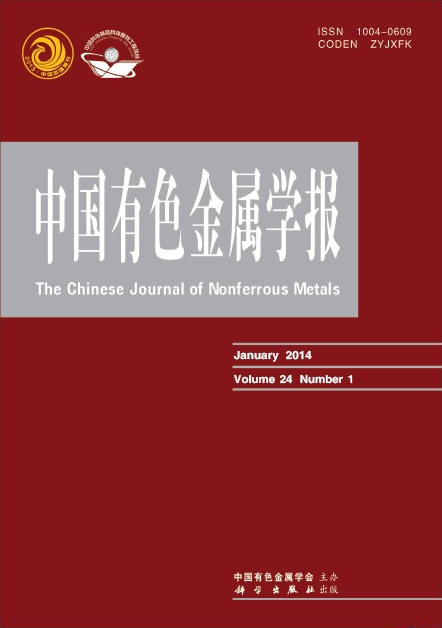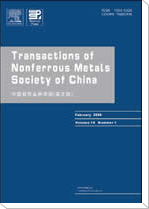(东北大学 材料与冶金学院, 沈阳 110004)
摘 要: 对Ni-Fe-Cu合金的抗氧化和耐熔盐腐蚀性能进行了研究。结果显示, 该合金的氧化动力学曲线符合抛物线规则。 静态电解质中的溶解腐蚀速率随温度的增高和NaF与AlF3的摩尔分子比的降低而增大。 在不同电解条件下,组成为NaF-AlF3-NaCl-CaF2-Al2O3的电解质体系中电解时,该阳极周围产生大量气泡, 槽电压在3.6~4.2之间波动,阳极的电解极化腐蚀速率随电解质中氧化铝浓度的增高、 温度的降低而减小, 产品铝的纯度达到97%~98%。
关键字: 惰性金属阳极; Ni-Fe-Cu合金;低温铝电解; 氧化; 熔盐冰晶石腐蚀
( School of Materials and Metallurgy, Northeastern University, Shenyang 110004, China)
Abstract: The anti-oxidation and anti-corrosion properties in molten cryolite of Ni-Fe-Cu alloys were studied. The results indicate that the oxidation kinetic curves follow the parabolic law. The dissolution rate in static melt increases with increasing temperature and decreasing cryolite ratio of NaF/AlF3. When electrolysis test was conducted in molten salts consisting of NaF-AlF3-NaCl-CaF2-Al2O3 under different conditions, abundant gas bubble evolved around the used anode and the cell voltage fluctuated from 3.6V to 4.2V. The polarization corrosion rate decreases with increasing concentration of Al2O3 in melts and decreasing temperature. The purity of aluminum product is 97%-98%.
Key words: inert metal anodes; Ni-Fe-Cu alloy; low temperature aluminum electrolysis; oxidation; molten-cryolite corrosion


